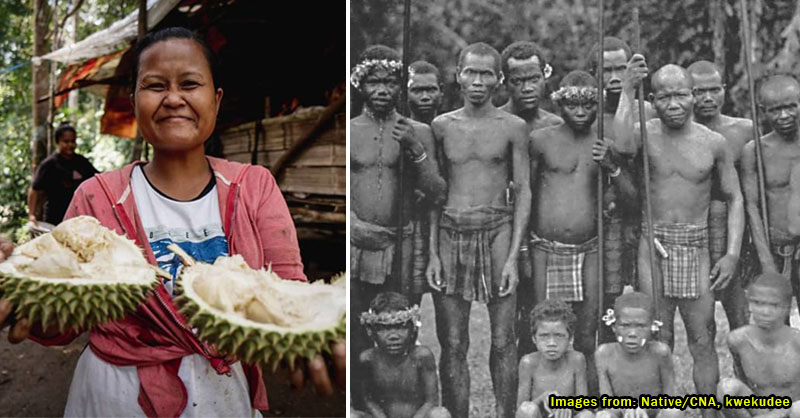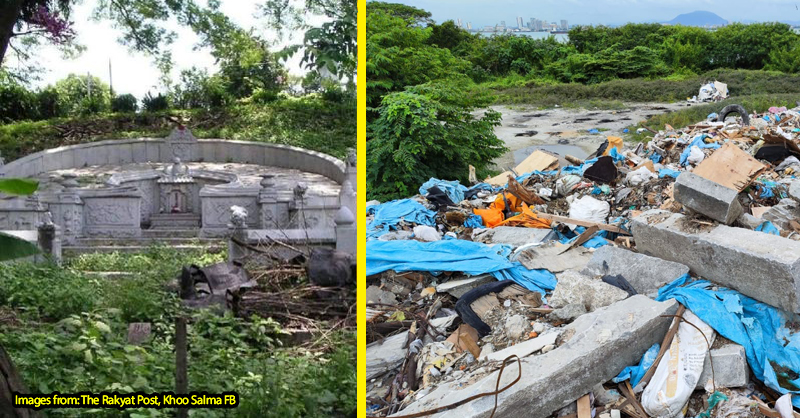Chickenpox made social distancing necessary in 1800s Malaya. Here’s how they did it.

- 785Shares
- Facebook750
- Twitter5
- LinkedIn7
- Email7
- WhatsApp16
[Artikel ini diterjemah dari SOSCILI. Untuk baca artikel ni dalam BM, klik sini!]
Ever since the coronavirus pandemic first reared its head earlier this year, we have been hearing a lot of three things: quarantine, social distancing and self-isolation. It’s kinda weird that just a few months ago, nobody would have guessed that we would be so intimate with these three previously unfamiliar terms now.

While the terms may be new, the concept behind them had been practiced in Malaya for some time already, at least for the past two centuries. Diseases and plagues come and go, and according to an excerpt about chickenpox in 1800s Malaya:
“The clothes worn by chickenpox victims would be burned along with their houses. In Jelebu, villagers are exempted from attending a burial if the death was caused by chickenpox. The spirits of chickenpox and cholera victims, much like the spirits of murder victims, are very feared by not only the Malays, but also by the Chinese community.” – excerpt from ‘Sistem Kuarantin dan Pelaksanaannya Di Tanah Melayu Pada Sekitar Abad Ke-19‘ by Aiza Maslan @ Baharudin.
To further illustrate how seriously people regarded infectious diseases back then…
The whole village would shun infected people, and their houses would be cordoned off
[Disclaimer: This article heavily refers to the journal titled Sistem Kuarantin dan Pelaksanaannya Di Tanah Melayu Pada Sekitar Abad Ke-19 (Quarantine Systems and Their Implementation in Malaya in the 19th Century) by Aiza Maslan @ Baharudin, hereafter referred to as ‘journal by Aiza Maslan’.]
While we didn’t have COVID-19 back then (although we did have the Spanish flu), we had other, more readily noticeable diseases. The most popularly recorded among these would be chickenpox, which is caused by the Varicella roster virus. The symptoms are quite showy, causing blisters and rashes to form on infected people, which is maybe why people took it quite seriously back then.

To make chickenpox breakouts worse, it can spread among the population through the air (through coughs and sneezes), as well as by touching the blisters on an infected person. Because of this, it was common practice in Malaya for the whole village to isolate and shun people who got infected. While travelling between countries weren’t as common back then as it is now, it seems several cases were brought in by people returning from hajj in Mecca.
“As an example, in the year 1891, a chickenpox breakout in the Kuala Kangsar area was spread by a hajj participant who recently returned from the Holy Land.” – translated excerpt from journal by Aiza Maslan.
Another case of a hajj participant bringing in chickenpox was recorded in the Matang district in Taiping, Perak in 1897. He was eventually shunned and isolated by the villagers, but due to the carelessness of the area’s headman, it was too late. People were only made to know about the chickenpox carrier four days after it was discovered.
Besides shunning the infected, the Malay community would often mark the isolated or quarantine area in various ways. A British officer had reported seeing one such area in Segamat, Johor in the early 1850s. The quarantine area was marked by a length of rope stretched between two poles, and on the rope itself, several leaves would be hung as a warning sign to not enter the area. This kind of warning sign was known as ‘putchoh‘, and it must have been common then since 30% of Muar’s people caught the chickenpox at that time.

In Kelantan and southern Thailand, the houses of infected people were surrounded by a type of rattan fastened from pole to pole by a type of woven Javanese thread. Plus trees ‘bitter enough to scare any spirit‘ were planted at the entrances.
“At every entrance of the houses being surrounded were planted two bedara pahit trees (Surycoma latifolia) in a crossing pattern. A 10-day quarantine had been ordered by the local royal shaman. Nobody was allowed to cross the line. A $5.00 fine was imposed on anybody who disobeyed. Every house must pay 5 kenderi, or roughly 15 Singaporean cents, as payment for the quarantine procedure.” – translated excerpt from journal by Aiza Maslan.
Besides surrounding and marking, Malayans had also employed guards to secure houses containing infectious persons. The guards will prevent any communication with people from the outside. Seems kinda similar to the EMCO, huh? Well, some of the reported reaction to these measures seemed a bit similar, too.
“This measure was once used on a Malay woman who lived in Parit Buntar, Perak. The authorities’ efforts to disinfect the villagers who came in contact with the woman came to a dead end after protests by the villagers.” – translated excerpt from journal by Aiza Maslan.
But while these measures seem orderly, it’s not always the case…
If there was a big outbreak in a village, people may move away, en masse
Villagers migrating away from plague-hit villages wasn’t an uncommon thing in 19th century Malaya, and it seems that people from all layers of society would do that back then. J.R. Logan, a British officer, had reported running into a local ruler and his attendant at the mouth of the Kedah river in 1850. They were escaping an area hit by chickenpox.

Besides that, the historical figure Tok Gajah was also reportedly infected by chickenpox once. As the story goes, once he realized that he was infected, he left the band of warriors he led, leaving the leadership to Haji Muhammad Nor and Penghulu Chenor.
“As soon as he arrived in Pahang, he did not go to see the Bendahara for fear of spreading the virus.” – translated excerpt from journal by Aiza Maslan.
Another account was by British officer J.W.W. Birch, who, upon arriving in Perak in November 1874, found the Sultan Abdullah at that time already travelling upstream the Perak River, leaving the chickenpox-hit Batak Rabit village. Other rulers have also been reported to leave their territories when it was hit by plagues.
“King Jalor and his followers also moved away due to an outbreak of the same disease. Tuanku Boosah of Muar was also reported to do the same by leaving his territory, for fear of contracting chickenpox.” – translated excerpt from journal by Aiza Maslan.
The mass migration of people running away from the chickenpox plague had aroused panic in the community. And since there’s the possibility of the plague spreading even further along with the migrants, some of the British officers at that time tried to bring order to put a lid on the panic.

Hugh Low, previously the British Resident of Perak, had reportedly ordered from chickenpox patients in Kampung Buaya in Perak to be isolated and gathered in one house. Interestingly, these patients were attended to by those who have recovered from the same disease.
“Hugh Low had also suggested for the patients to be brought to the military hospital for further treatment. However, the fear towards chickenpox had resulted in the reluctance of health officers to attend to the patients. Hugh Low finally ordered for a special hospital for chickenpox to be erected in the Matang District that operated for four and a half days a week.” – translated excerpt from journal by Aiza Maslan.
And while it used to be a disease scary enough to put whole villages on the run…
Thanks to better handling of infectious diseases, chickenpox aren’t that scary anymore
It’s not a sudden process, but Malaya gradually got better at handling chickenpox (plus other infectious diseases). In 1858, the British administration introduced the Native Passenger Act in Malaya, which included quarantine measures. However, it was deemed incomplete, so in September 1868 it was improved by a Quarantine Ordinance. This ordinance was imposed on every ship that docked in the Straits Settlements, including ships carrying hajj participants.

These quarantine measures were also used on foreign laborers brought into Malaya in the 1860s, including those from India and China. In 1903, our measures against infectious diseases got improved again through the introduction of the 1903 Quarantine and Disease Prevention Enactment, which states that public places like restaurants, theaters, cinemas and public halls must be shut down every time an infectious disease comes knocking.
Improvement in this area is a continuous process, and we’ve actually covered this in more detail in another article. However, looking at the current coronavirus situation, there’s only so many plans the government can come up with to curb the pandemic while still being realistic. The people have to do their part as well, and the conditional MCO we’re currently facing will be a good test on whether or not we can do that.
For now though, we’re already seeing arrests for violations of the conditional MCO, so things aren’t looking good. At the end of the day, perhaps we can look back on how people back then treated chickenpox outbreaks and wonder… if Covid-19 causes ugly, itchy blisters like the chickenpox did, would people be more willing to take their own precautions?
[If you enjoyed this story and want more, please subscribe to our HARI INI DALAM SEJARAH Facebook group]
- 785Shares
- Facebook750
- Twitter5
- LinkedIn7
- Email7
- WhatsApp16



